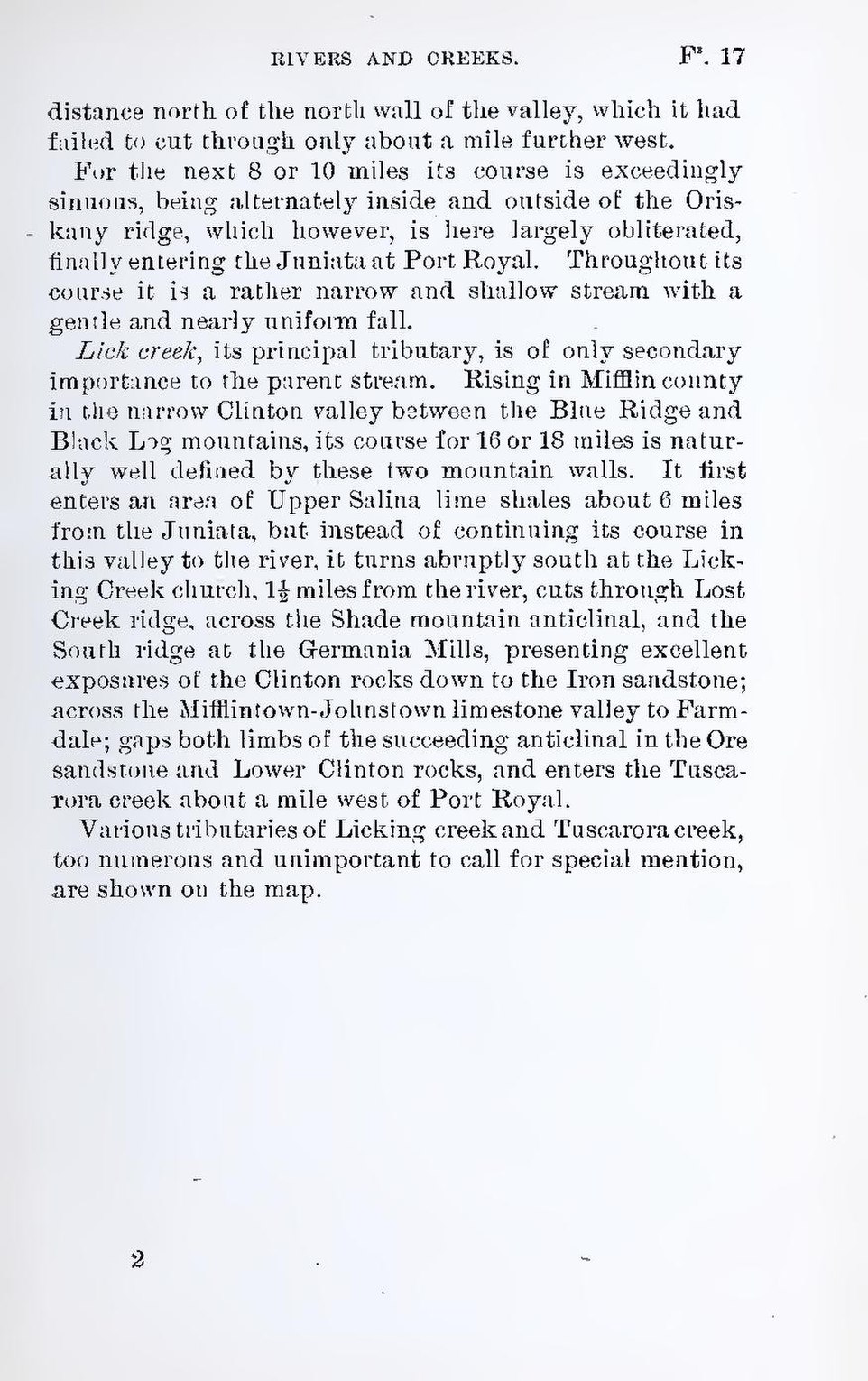distance north of the north wall of the valley, which it had failed to cut through only about a mile further west.
For the next 8 or 10 miles its course is exceedingly sinuous, being alternately inside and outside of the Oriskany ridge, which however, is here largely obliterated, finally entering the Juniata at Port Royal. Throughout its course it is a rather narrow and shallow stream with a gentle and nearly uniform fall.
Lick creek, its principal tributary, is of only secondary importance to the parent stream. Rising in Mifflin county in the narrow Clinton valley between the Blue Ridge and Black Log mountains, its course for 16 or 18 miles is naturally well defined by these two mountain walls. It first enters an area of Upper Salina lime shales about 6 miles from the Juniata, but instead of continuing its course in this valley to the river, it turns abruptly south at the Licking Creek church, 1½ miles from the river, cuts through Lost Creek ridge, across the Shade mountain anticlinal, and the South ridge at the Germania Mills, presenting excellent exposures of the Clinton rocks down to the Iron sandstone; across the Mifflintown-Johnstown limestone valley to Farmdale; gaps both limbs of the succeeding anticlinal in the Ore sandstone and Lower Clinton rocks, and enters the Tuscarora creek about a mile west of Port Royal.
Various tributaries of Licking creek and Tuscarora creek, too numerous and unimportant to call for special mention, are shown on the map.
